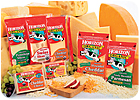
In order to understand the importance of sustainable packaging, it is necessary to understand sustainability and triple bottom-line thinking.
Sustainability is about delivering results that support business goals. And these results must be economically, socially, and environmentally positive. For sustainability to work, it must deliver all three, especially the financial component.
Sustainability is becoming more important as corporations think about corporate social responsibility (CSR) and what will be important to be successful in the future. As the world becomes flatter and more transparent, corporations need to recognize they will be more responsible for their actions than ever before. As a result, paying attention to the triple bottom-line (TBL) to deliver financial positives, social responsibility, and environmental benefits will be required for success.
One of the key tenants of sustainability is sustainable packaging. This is a relatively new trend in the U.S., and is more than reduce, recycle and reuse. Sustainable packaging requires more holistic and systems thinking across the packaging value chain. For those not familiar with sustainable packaging, the Sustainable Packaging Coalition (www.sustainablepackaging.org) has a definition that aids the reader in understanding this concept at a deeper level. For our purposes, sustainable packaging is an ideal that is focused on delivery of an overall neutral or positive impact from packaging. Some examples of improved sustainable packaging include:
- Employ further source reduction;
- Pursue reuse/refillable package options;
- Increase recycle content;
- Use more renewable energy sources;
- Reduce greenhouse gas emissions;
- Evaluate alternative bio-based/renewable materials; and
- Life-cycle considerations and optimization (cradle to cradle).

Photo Courtesy of Horizon Organic
Beginning in 2007, all Wal-Mart suppliers (brand owners) will input into the scorecard and packaging suppliers will input into the Packaging Supplier Virtual Trade Show Tool, and everyone will be measured in 2008 according to the previously identified metrics. The goal is to provide a 5% material reduction by 2013 that will result in $3.4 billion in savings with comparative savings in energy, greenhouse gases (CO2), and more.
Packaging trade organizations like the Glass Packaging Institute (GPI), Paperboard Packaging Council / Paperboard Packaging Alliance (PPC/PPA), Flexible Packaging Association (FPA), among others, are working hard to help their membership with package sustainability questions and answers.
Kevin Stevens, v.p. sales and marketing at Owens-Illinois, and Dick Dudley, market business mgr. at Weyerhaeuser, both said that the glass and paperboard industries are focused on delivering more sustainable solutions to their customers, respectively. And both industries have proprietary work underway looking at lightweighting packaging over the coming years. Marla Donahue, pres. of the Flexible Packaging Association (FPA), said that the FPA continues to support the importance of source reduction for flexible packaging and also said the membership has a strong focus on the value and opportunity of sustainable packaging in 2007.
So what does this mean specifically for dairy? For one, it means that a new element has been added to the equation for what makes an ideal package for milk. This could be even more important for marketers of organic and natural products, and the dynamic will be different for companies which deliver products locally than for those that ship regionally or coast to coast.
All companies should be looking at their packaging portfolios to identify what kind of issues and opportunities they have for sustainable packaging. A few brand owner ideas/opportunities are identified below:
- Dannon recently removed its plastic lid on single-serve yogurt, as has Stonyfield Farm.
- Ben & Jerry’s uses natural kraft paperboard rather than bleached board for its ice cream cartons.
- Seal-IT recently introduced shrink sleeve labels made from EarthFirst PLA (biopolymer made from corn).
Sustainable packaging is here to stay, and as companies look to new product and package development, they need to consider the impact and importance of sustainable packaging early in the process-if not, the consequences could be damaging to brand owner companies.
PTIS is a leading packaging consultancy that provides sustainable packaging workshops and strategy development. For more information, go to www.pti-solutions.com.